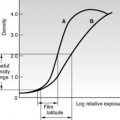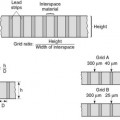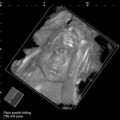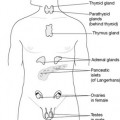Chapter 5 Clinical skills for preparation of the patient and clinical environment
 Infection control is essential to ensure that the environment is safe and clean for patients and staff at all times.
Infection control is essential to ensure that the environment is safe and clean for patients and staff at all times. Record keeping is needed to provide a continuation of care for the patients during their stay or treatment within the clinical environment where a number of professionals and individuals are involved at different times.
Record keeping is needed to provide a continuation of care for the patients during their stay or treatment within the clinical environment where a number of professionals and individuals are involved at different times.INTRODUCTION
Great importance must be put on the maintenance of a safe and clean clinical environment for the patients. Within the diagnostic imaging department it should be recognised that all patients have the potential to carry and transmit organisms. It has been shown that nosocomial infections (those occurring in a hospital setting) can be reduced considerably with the introduction of basic hygiene procedures.1 In order to prevent the transfer of infections it is important to be aware of the specific organisms that can cause infection and the mode of transfer so that the cycle of replication can be disrupted.
DISEASES AND ORGANISMS
A disease is a condition causing symptoms of an illness, which occurs when cells or molecules within the body stop functioning properly. For example, a disease can be caused through aging, the effects of chemicals, or arise from gene mutation/alteration.
BACTERIA
CROSS-INFECTION
Therefore, it is essential that the equipment, environment and healthcare professional are subject to varying levels of cleanliness dependent on the clinical requirement (Table 5.1). There arethree main levels of cleanliness that exist with regards to equipment and surfaces: clean, disinfected and sterilised.
Table 5.1 The purpose and contraindications of cleansing agents
| Cleaning agents | Purpose in department | Contraindications for use |
|---|---|---|
| Chlorhexidine gluconate solution 2.5% | For cleansing the skin prior to a procedure | Not for hard surfaces |
| Chlorhexidine gluconate 0.015%, cetrimide 0.15% (e.g. Savlon/Tisept/Sterets) | Not for hard surfaces or open wounds | |
| Chlorhexidine gluconate solution 2.5% (e.g Hibiscrub) | None | |
| Detergent, sanitiser, blue bleach powder (sodium hypochlorite) | For body fluids and spillages | Not for skin |
| Cleansing foam (e.g. Esemtan) | Antimicrobial deodorising foam | Not for hard surfaces, floors, etc. |
| Povidone iodine 7.5% (e.g. Videne antiseptic solution) | A rapid acting non-irritating aqueous iodine solution | For skin only. Not for hard surfaces, floors, etc. |
| Alcohol impregnated wipes | For hard surfaces and skin | Not for open wounds |
| Sodium chloride 0.9% solution | For skin and open wounds | None |
| ‘Decon’ | For neutralising radioactive spills | None |
STERILE SUPPLIES PACKAGING
In order for the healthcare professional to know whether a set of instruments is sterile there are indicators on the outer packaging, which must be intact (Fig. 5.1).
Specialised tape will seal the package. Non heat treated CSSD tape will have diagonal white lines: heat treated and therefore sterile tape will have black diagonal lines. A label will also indicate the date and cycle number of sterilisation (Fig. 5.2).
Stay updated, free articles. Join our Telegram channel

Full access? Get Clinical Tree









